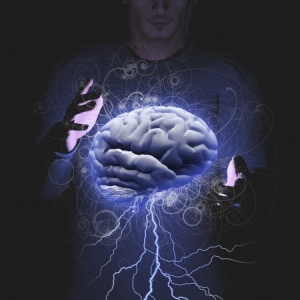Is ECT Brain Disabling?
I’ve only had a couple of up-close-and-personal experiences with people who have had electroconvulsive therapy (ECT). Both were residents of a long-term addiction treatment facility for women. One woman was in her late 20s who didn’t appear to have suffered any serious side effects after her ECT treatment. But the ECT didn’t seem to have a clearly positive effect on her depression. Actually, her mood seemed rather flattened afterwards.
The other woman had been a resident for a few months and suffered a severe depressive episode for which she agreed to have ECT. A small group of the residents gathered around her when she returned from her stay and ECT treatment at Western Psychiatric Institute and Clinic (WPIC). The other residents were supportive, asking how she was doing; telling her they were glad to see her, etc. She responded in a quiet, timid manner, thanking them for their support. As the group broke up and we entered the facility, she whispered to me: “Who were those people?”
Since then, I’ve read some of the material of the opponents to ECT, particularly Peter Breggin, who has a long history of activism against ECT. Dr. Breggin, has gathered an incredible amount of information on the website ECT Resources Center.
So I was interested when I saw an online article in the Pittsburgh Post-Gazette in December of 2013 on ECT treatment at WPIC, “Electroconvulsive therapy a surprisingly common treatment for mental illness.” The psychiatrist who treated the woman in the article said that ECT “is the most effective antidepressant still out there.” The article was clearly positive about the use of ECT, but a sentence stood out to me: “Doctors are still not sure why ECT works.” Yet, Dr. Breggin wrote on his website:
ECT works by damaging the brain. The initial trauma can cause an artificial euphoria which ECT doctors mistakenly call an improvement. After several routine ECTs, the damaged person becomes increasingly apathetic, indifferent, unable to feel genuine emotions, and even robotic. Memory loss and confusion worsen. This helpless individual becomes unable to voice distress or complaints, and becomes docile and manageable. ECT doctors mistakenly call this an improvement but it indicates severe and disabling brain injury.
A 78-year-old Beaver Falls woman, who had been treated for a bipolar disorder since the 1960s, was the featured patient in the Post-Gazette article. The reporter, Mark Roth, was permitted access to observe her ECT treatment. He wrote that she was unconscious and her muscles were paralyzed from anesthesia, “It was over in 8 seconds. . . . For her and for anyone watching, it was far less dramatic than they might have imagined.” After her series of 10 shock treatments, the woman felt that ECT helped her tremendously. She said that ECT made it possible for her to climb out of the deepest depression she had ever experienced.
The comment of ECT being “far less dramatic” was an allusion to the 1975 movie “One Flew Over the Cuckoo’s Nest,” where Jack Nicholson’s character was held down by attendants as he went through ECT treatment and the resultant seizure.
The modern use of anesthesia and muscle relaxants means that physical restraint, as portrayed in the movie, no longer occurs. But as Dr. Breggin pointed out in a debate with Dr. Helen Lavretsky, anesthesia makes it more difficult to initiate a seizure, so the patient has to have a greater shock than was given in the past. Listen here to the debate with Dr. Helen Lavretsky located on the ECT Resources Center website.
Dr. Lavretsky said that ECT was rarely performed, but Dr. Solia of WPIC, said that was a common misconception, at least at WPIC. He said that WPIC was one of the largest operations in the nation, performing “more than 300 electroshock procedures per month.” An assembly line procedure had “one set of patients being prepped with IV lines as another one is getting the treatment and still others are coming back to consciousness in a recovery area.”
There hasn’t been any follow up to the Post-Gazette article, even though the original article did say it was the “first of five parts.” In preparing my own article, I read the comments to the original article and I think I understand why. What was supposed to have been a positive public relations story about the ECT clinic at WPIC became a lightening rod that attracted strong negative attention. The majority of comments were negative like the following:
Not everyone’s ECT experiences are as positive as this article suggests. After my ECT I lost all memories of the year of my life before the treatments. This caused social and professional problems, as you can imagine, and also considerable personal pain. I also acquired some cognitive deficits with which I continue to struggle. (Sonia)I found ECT severely traumatizing, rendering profound memory loss that continues to manifest itself even 1 1/2 years later. I continue to suffer with cognitive defects and emotional pain that interfere with my work, social and personal life. I have repeatedly encountered others with very negative experiences. ECT does have positive results in some, but there are many for whom the treatment fails and wreaks havoc. (Kelly)
At least some of the individuals thought the article sounded like a “PR piece.” Cheryl asked: “Why not write another piece of equal length, focusing on the points of view medical professionals and former patients and their families who have the opposing viewpoint.” Don’t continue to wait for that to happen. I don’t think there will be any follow up articles. Just go to Dr. Breggin’s ECT Resources Center and get credible information on the problems with ECT.

